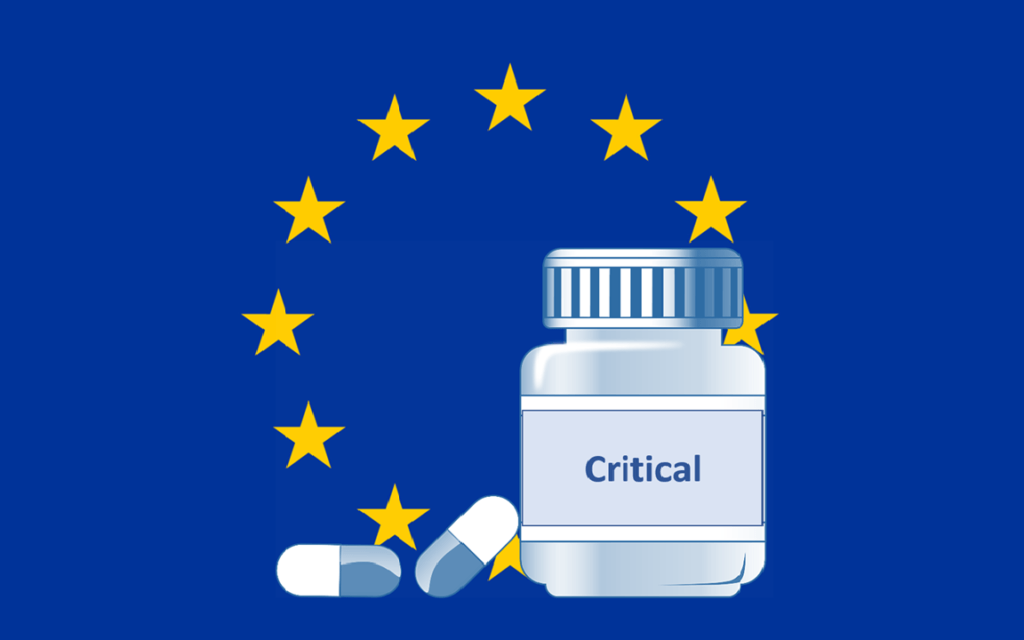
On December 6th, 2023, the European Medicines Agency (EMA) in collaboration with the EU Heads of Medicines Agencies (HMA) released the first-ever European List of Critical Medicines. This list includes 200 medicines whose “continued supply is considered a priority in the EU, to avoid serious harm to patients and help healthcare systems function”. At present, the list includes only the names of active pharmaceutical ingredients without specifying the pharmaceutical form (tablet, injection, syrup, etc.) or dosage strength (such as milligrams per tablet or per milliliter).
From a global public health perspective, drawing parallels between this brand new EU List of Critical Medicines and the WHO Model List of Essential Medicines, initially published in 1977 and updated biennially, is tempting. Indeed, similarities exist. Both lists guide the selection of priority health products from a public health perspective. They also aim to support efforts to ensure the uninterrupted availability and quality of these chosen medicines.
However, there are also profound differences in approach, objectives, and processes. The WHO model list has served for decades as a guide for countries, mostly in the Global South, to develop their own National Essential Medicines Lists. Essential medicines are chosen through a meticulous process that evaluates disease prevalence, public health relevance, evidence of efficacy and safety, and comparative cost-effectiveness. By 1999, 156 countries, primarily low and middle-income, had established national lists, critically shaping pharmaceutical policies, procurement strategies, and clinical practices, thereby contributing to the optimization of pharmaceutical expenditures. Furthermore, in 2007 the WHO published the first Essential Medicines List for Children and in 2017 it introduced the AWaRe Classification of antibiotics to guide their appropriate use in the fight against antimicrobial resistance.
In contrast, countries in the Global North generally do not adopt Essential Medicines Lists as a standard national reference for medicine selection. Nonetheless, healthcare providers must select and manage medicines to offer to patients from the multitude of registered and marketed products. For instance, public and private healthcare coverage schemes define lists of medicines that are eligible for reimbursement. The complexity of medicine evaluation can sometimes result in suboptimal choices, including the inclusion of medicines with no added benefit (as reported for example here, here and here).
The EU List of Critical Medicines is an important component of the European Commission set of actions aimed at preventing shortages of medicines in EU member states. The EU has observed a significant increase in shortages of basic medicines since 2008, as highlighted in the 2020 Report on The Shortages of Medicines. The COVID-19 pandemic and the war in Ukraine further intensified the vulnerability of supply chains. The winter of 2022-2023 witnessed a major crisis in the availability of basic antibiotics across many European countries, triggering substantial political and social alarm, and accelerating the development of a common strategy to prevent and manage shortages of medicines.
The Critical Medicines list has been developed through the collaborative efforts of member states and comprises medicines already registered and marketed in the EU. They have been selected following a risk assessment methodology centered on the potential negative health impact resulting from a shortage of each active ingredient. Unlike in the WHO model list, the primary objective is not to inform clinical and public health policies, but rather to establish a consensus on the crucial active pharmaceutical ingredients that the Commission should prioritize through investments in production and the supply chain.
Recognizing the list’s limitations in preventing all shortages, its primary goal is to secure the continual availability of the selected critical medicines, providing alternative treatments for those experiencing supply issues. This, in turn, should contribute to guaranteeing the provision of high-quality healthcare. Perhaps the EU should consider elevating its ambitions, after this important step. Only including critical active pharmaceutical ingredients on the list without specifying the pharmaceutical form or dosage strength indeed raises the question whether this approach can guarantee suitable treatments for a variety of healthcare conditions and populations.
The WHO Essential Medicines List approach, built on decades of experience, indicates that essential (or critical) medicines should be chosen through systematic and transparent comparative cost-effectiveness evaluations, guided by scientific evidence. It is crucial to specify the needed formulations and dosages for each medicine. Along the same lines, a more comprehensive EU Critical Medicines list will facilitate the rational prescription and use of medicines, addressing antimicrobials, and considering the specific needs of children. Efforts to prevent the inappropriate and/or unnecessary prescription of medicines become even more crucial given the current reality of medicine shortages affecting all regions in the world. Furthermore, such a list will aid in controlling public, private, and patient expenditures, while providing guidance for interventions necessary to secure the supply chain.
Establishing its first-ever Critical Medicines List marks a significant milestone for the EU, including the acknowledgment of weaknesses in its procurement and supply system for medicines and the initiation of efforts to address them. However, embracing a more comprehensive approach could represent a valuable advancement for EU health systems and the communities they serve.
With the contribution of Raffaella Ravinetto and Radhika Arora.